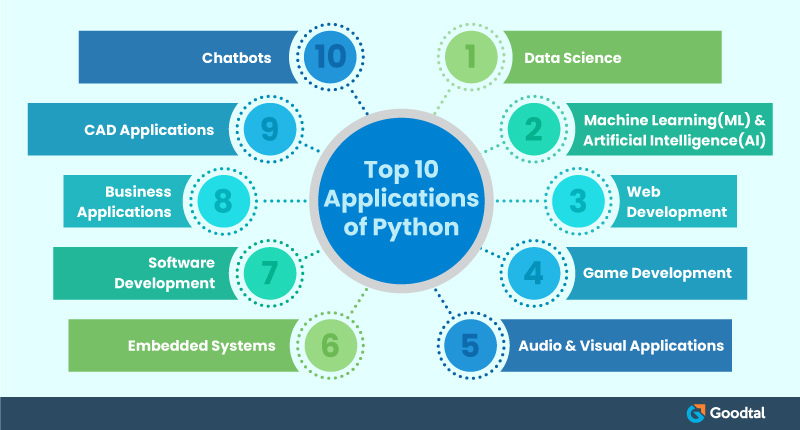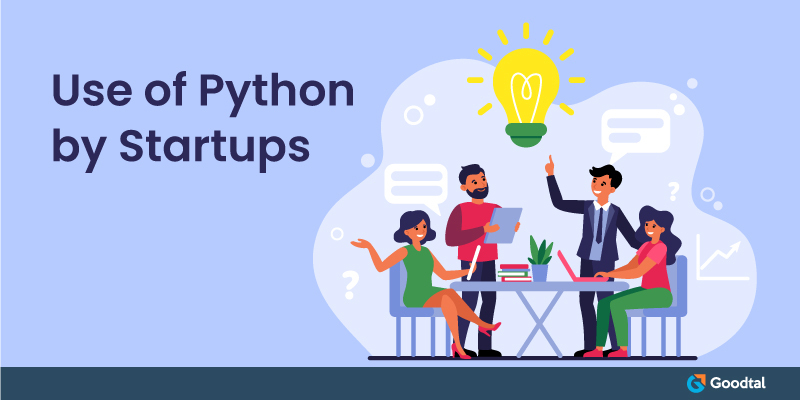
There are several programming languages that can be used for different applications. Python is a programming language first introduced in 1991 by Guido Van Rossum. It is a popular language today and can be used for various applications. It is almost like a language we speak, therefore easy to use and understand.
Python can be used for applications like web development, game development, Data Science, Machine Learning, Artificial Intelligence, embedded systems augmentation, and the list goes on! However, of late, it has been used extensively for Data Analysis & Interpretation. Data is the next big thing; with petabytes generated every second, analysis requires an automated tool. Data Scientists are currently using Python for analyzing vast sets of data to come up with insights, which can be used for business decisions.
Some Interesting Facts About Python:
- Python is one of the official programming languages of Google
- Python does not require a compiler
- Python has C as well as Java variants
- Python code is very similar to the English language
- Python has more than 137,000 in-built libraries which can be used for various applications
In this blog, we look at the top 10 applications of Python programming language which are revolutionizing the world.
Top 10 Applications of Python
(1) Data Science
Data is considered gold dust as it can be used to detect patterns in consumer behavior. This analysis can further be used to make resource allocation, marketing campaigns, and pricing decisions. Python is equipped with in-built libraries that Data Science Companies can use. These libraries include TensorFlow, Pandas, and socket learning, enabling complex data analysis. They provide an environment for fine-tuning data models and analyzing complex data.
Python provides a perfect tool for data visualization as it provides several ready-to-use functions. The presence of in-built libraries helps Data Science professionals. Data visualization can be used to make sense of the collected data, and it can also be used for graphics and maps. Python has data libraries such as Matplotlib and Seaborn that can be used for plotting graphs.
(2) MachineLearning & Artificial Intelligence
Machine Learning(ML) & Artificial Intelligence(AI) are being used in computing to develop better systems, which get smarter by the day. Python provides concise & straightforward code, which makes it easier for developers to write complex algorithms. Some of the inbuilt tools in Python for AI & ML are:
- Seaborn for data visualization
- SciPy for technical computing
- Keras for Machine Learning
- Numpy for complex data analysis
AI & ML applications development require a different approach and mindset. Python makes it easier for developers to develop such code by providing a suitable environment.
(3) Web Development
Web development includes designing, creating, deploying, and maintaining web applications on the internet. Python developers use a combination of Python & Javascript for web development. Python is executed on the server-side, whereas JavaScript is downloaded to the client on the web browser.
Python has a framework for website development, making the task easier. These frameworks include Django, Pyramid, Flask, and Bottle. The use of Python for web development provides excellent visualization, a fast development process, enhanced security, and convenience in development. Python is especially useful if someone wants to develop a website from scratch.
(4) Game Development
Python is popular with Game developers due to its simplicity and inbuilt libraries. Python has been used for developing some of the functionalities of popular games like Pirates of the Caribbean, Battlefield 2, and Bridge Commander. Python also possesses gaming libraries like Pygame, Cocos2D, and panda3D, which simplify the development process. It has easy-to-understand tutorials and simple code designed for game scripting. Python is a more suitable option for programmers who are still learning tricks of the trade.
Another factor, which favors Python, is its ability to reuse large sets of code. One can even use code written by other developers stored in Python's code libraries. Debugging is also easier in Python as the language is very similar to what humans speak.
(5) Audio & Visual Applications
Video & Audio applications can be built using in-built libraries provided by Python programming language. These libraries include Dejavu, OpenCV, SciPy, Mingus, and Pyo. Some of the existing applications include TimPlayer and Clay, which are media players providing better stability and performance. Some of the big names which have used Python include Netflix, Spotify, and YouTube. This has been achieved by using libraries like Pyo, Mingus, Dejavu, OpenCV, and SciPy.

(6) Embedded Systems
As Python is developed using C, it can be used to create Embedded C software. Thus small devices which can compute Python will be able to provide higher-level applications. Raspberry Pi is Python's most famous embedded application and can be used as a computer or a simple embedded board. Other applications include those Digital Cameras, industrial robots, and Smartphones. Python is being used even in a microcontroller-based environment as it is flexible and easy to learn.
(7) Software Development
Python is also suitable for Software development as it possesses features like fast execution, strong community support, several libraries, and high compatibility. However, developers use it as a programming language due to its ability to work with technologies like Artificial Intelligence, Machine Learning, and Data Science. Apart from its use as a primary programming language, it is also used as a support language for building controls, project management & testing.
(8) Business Applications
Business-level software is different from standard applications as it should be easily readable and scalable. Very few programming languages provide such features, and Python is one of them. Oddo is a Python-based solution that provides a suitable platform for business applications. Another similar platform is Tryton, a 3-tier tool for creating business applications. ERP and Ecommerce applications are commonly developed using Python.
(9) CAD Applications
CAD stands for Computer-Aided Design, which can be used for creating 3D and 2D models. Python for CAD is used by Construction professionals, product designers, and architects. Python provides exceptionally high consistency in these types of applications. Softwares such as Blender, open cascade, and FreeCAD have been built using Python. Features included in this softwares include dynamic system development, technical drawing, file import, and export.
(10) Chatbots
Python is one amongst the most widely used languages for creating chatbots. Natural Language Processing(NLP) is a technique for human-machine interaction using natural language. Python makes use of NLP for creating chatbots. They are used for customer support and execute repetitive tasks much quicker than humans. Chatbots free up time for humans so that they can focus on more challenging tasks. Python-rtmbot is a popular open-source framework with Real-Time Messaging(RTM) API over WebSockets. For chatbots, python users may use libraries such as NLTK, spacy, etc.
Having discussed the top 10 applications of Python programming language, it can be deciphered that Python has tremendous potential as far as applications are concerned. As it has easy-to-use syntax, which is almost like the language we speak, it is becoming more popular with programmers. It is also the first choice for beginners because of its simplicity.
"Python is an experiment in how much freedom programmers need. Too much freedom and nobody can read another's code; too little and expressiveness is endangered" - Guido van Rossum, Python Designer.
Use of Python by Startups

A startup's ecosystem is completely different from those of established corporations. Startups are not sure what their clients will like and therefore require scalability, technology integration, and quicker Minimum Viable Product(MVP) development. All of these are supported by Python, and accordingly, experts suggest that Python should be the preferred programming language for technology-driven startups.
Startups are likely to grow over a period of time, and Pythons Django web framework is capable of handling heavy traffic. Django masks the source code for security reasons and provides protection from cyber attacks.
Use by FinTech and the Financial Industry

New technologies are continuously disrupting the financial industry. With its flexible frameworks, Python allows Financial sector firms to cope with constant technological shifts. Python is open-source and provides a range of toolkits and libraries for the financial industry. It is cross-platform as it supports Windows, Linux, and Mac OS. Python offers a clean design, simple syntax, and robust integration.
Python is a logical choice for FinTechs as it can address challenges in the sector like data volume, compliance, regulation, and Analytics.
Conclusion
In this technology-driven world, staying abreast of the competition becomes necessary. Python is being used extensively worldwide by companies belonging to diverse sectors. Development using C or C++ takes much longer as compared to Python, increasing the time taken to develop prototypes and get feedback. This makes Python programming a rewarding career option for professionals. So, hire the best Python programmers for your business and make use of the flexibility it provides!
